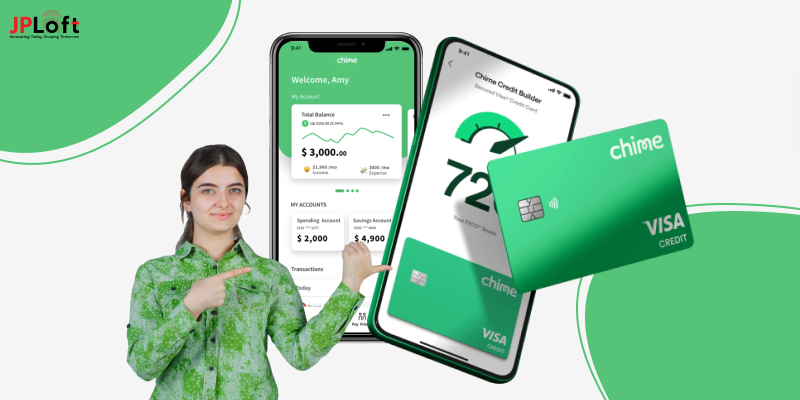If you invest in stocks, digital gold, bonds, or other financial instruments, in that case, you may find it difficult to keep track of your portfolio investment. Consequently, they are unable to earn the highest returns, which can result in the most favorable returns. If yes, then portfolio and investment management apps are the solution. Professionals, particularly those who work, have been increasing their desire to invest for short-term and long-term objectives.
According to a study, about 61% of Americans invest in stocks, and this number is growing year on year. Since more than half the US population is already investing and more are expected to invest shortly, the development of portfolio management apps becomes more important for catering to the expanding users.
So, if you're seeking to create a custom portfolio management app but don’t know where to start, this blog can help with the technical elements of its development.
Portfolio Management Applications: An Overview
Portfolio management apps are mobile apps that permit individual clients, portfolio managers and finance professionals to oversee their personal or clients' investment portfolios. It's essential to check investments and determine which ones are performing and which aren't.
This is why they use portfolio management apps and software with sophisticated features and functions to help them track, analyze, and maximize their portfolios. These apps allow them to make well-informed decisions based on data regarding their investment strategy.
It is estimated that the global portfolio management software industry is expected to earn $11.8 billion before 2032. Demand for cloud-based portfolio management tools and software will increase exponentially over the next few years. The reports show that the need for portfolio management apps will continue to grow. This is why now is the perfect moment to create the portfolio management application and take advantage of this chance.
Why Invest In a Portfolio Management App?
Before diving into the specifics of constructing the portfolio management application, it is crucial to comprehend the main reasons for investing in portfolio and investment management solutions. So, let's have a look:
Enhanced Brand Visibility
With the help of digital transformation of a mobile app development firm, you could develop an application that will serve as a strong marketing tool. Portfolio management apps can display your company's name, its logo, and a user-friendly interface. By using a user-friendly and well-designed application, you will be able to increase your branding and make a positive impression for your potential customers.
Helps In Risk Management
Bonds, stocks, and digital golds each have the possibility of uncertainty. However, by using the most effective tools for managing portfolios, you can help your customers detect potential risks, make investments wisely, and reap an excellent ROI.
Competitive Advantage
The application market for portfolio management is expected to increase in the coming years. So, making an app or software to help people control their investments gives you an edge within the Fintech industry.
Data-Driven Insights
Portfolio management apps collect important user information, such as investors' preferences, behavior, and performances. With the help of this data, you can gain insight into customer trends, find possibilities for personalized suggestions, and develop marketing strategies.
Performance Tracking And Reporting
Portfolio management applications also include reports and performance-tracking features, allowing you to track investment performance. Additionally, they can generate reports with crucial details about the investment portfolio and assets.
Types Of Portfolio Management Applications
Below is a list of portfolio management software and applications you could build for your company.
Personal Portfolio Tracking And Management Apps
Personal portfolio management apps are apps that a mobile person can utilize to manage their investment portfolio. These apps can manage fixed deposits, bonds, gold, and various other types of investments.
Asset Portfolio Management Solutions
These portfolio management apps allow customers to control their investments. Users are provided with cutting-edge features to easily manage assets like cash and equivalents, cash savings accounts, insurance policies and jewelry.
Stock Portfolio Management Applications
It is possible to create stock portfolio management apps and software that allow investors to control their share portfolio, which comprises bonds, stocks, funds, foreign exchange units, fund units, etc.
Cryptocurrency Portfolio Tracking & Management App
Given the growing popularity of cryptocurrency worldwide, establishing the cryptocurrency portfolio management app is an effective fintech app concept for development. The creation of this app helps crypto investors manage their portfolios, which are made up of crypto-ETFs and cryptocurrencies.
Institutional Portfolio Management Tools
Top companies utilize institutional portfolio management tools and software to manage their portfolios. Through these instruments, Portfolio managers of these organizations can monitor and oversee the portfolio of assets and projects, including stocks and other investments for the firm. Additionally, these instruments and programs are utilized by the top financial institutions to oversee the portfolios of clients with high net worth all over the world.
Real Estate Portfolio Management Solutions
The technology industry is revolutionizing real estate quickly, and real estate portfolio management solutions are proof. They assist real estate companies in managing their properties. Additionally, they help users keep track of and manage their real estate portfolio, including properties, rent income, land, taxes on real estate, and more.
Must-Have Features Of Portfolio Management App
Below are a few sophisticated features that you can incorporate into your portfolio management app or software to improve user experience and the functionality of your solution.
Registration
Users sign up using various registration methods (username or email address, phone number, social media accounts, and so on). The main challenge to developing this option is ensuring safety. This is possible through two-factor authentication with new biometric technologies (like the face or the touch ID).
Profile of the user
In it, people can enter personal information details (name, age, etc.) and other details such as experience in trading or financial objectives. These will permit the application to offer pertinent options and specific suggestions.
Portfolio Management
A crucial feature to incorporate in your portfolio management app. Your app users can easily and effortlessly manage their portfolios of investments, keeping all information about their investments secure and in one location. Users can also monitor their portfolios, perform performance analysis, and purchase or sell securities using this option.
Portfolio Optimization
Initially, you must look into adding portfolio optimization to your investment app. AI algorithms evaluate a user's portfolio before providing them with individualized advice. This will enable them to maximize their investments according to their objectives and risk tolerance.
Automated Trading
If you want to add value to your application, consider adding automated trading. With this feature in place, AI algorithms can automate the purchase and sale of stock. The choice will depend on pre-determined factors, including the market's conditions or investing strategies.
Real-Time Market Data
Following the previous list, there is a live market, which is a crucial element you should have in the app for investment. By integrating this feature, you can allow your users to access current information on prices for stocks, indices, commodities, and various financial instruments. By providing this data, they will be informed and able to make educated investment choices.
Transaction management
Cash in or out, investors want complete and accurate details about their cash flow. Create an investment platform that helps customers manage their money flow using a simple and intuitive interface.
News and insights
Features for news and insight could be integrated into blogs or a news feed section in your custom portfolio management application. By incorporating this feature, your application will be equipped to provide relevant news about market analyses, insights, and analysis. Your customers will stay updated about the latest market developments, corporate announcements, and economic news that could affect their investment decisions.
Integration with the financial system
People prefer to put money into various platforms such as banks, e-wallets, cryptocurrency wallets, etc. The app you choose should allow money transfers from any services you can. The more features your app can support, the bigger your market is. Think about this when you are building a portfolio management application.
Calculator for investment
The investment process involves a variety of taxes, fees, and regulations. The app can assist people in working out the numbers by creating a calculator within your application. Additional functions, such as financial forecasting and profit planning, can enhance the app.
KYC AML integration
Know Your Client and an Anti-Money Laundering Integration is essential for compliance with investment apps. Talk to a lawyer about specifics and additional regulations you must be mindful of and adhere to for each nation you want the app to be able to function.
Search and filtering
It's a fundamental purpose, but an essential one to provide a positive customer experience. Most users have already established their preferences for investment tools, the amount, period of time, and so on. Therefore, filters and searches are useful in deciding on the best investment option that meets your needs.
Push notifications
In the realm of trading, real-time trading information can be a boon. People will love notifications built into the system of their most-loved instruments and the latest market updates. In some cases, future buyers may want to purchase stocks with exact costs, and push notifications can be a fantastic option to encourage their desire. Additionally, you could inform your customers when significant happenings occur in the markets, such as a change in the interest rate.
Watchlist and alerts
Then, we'll provide a watchlist and an alert feature that lets users make personalized watchlists of the shares or investments they're attracted to. Users will also be able to create price alerts and notify them so they will be informed of important price changes or other information related to their chosen security.
process to develop a Portfolio Management App
The development of portfolio management apps involves many steps. This section will provide you with information about these steps in greater detail.
Define the objectives and requirements
A portfolio and investment management app development process starts with a detailed plan of the subsequent development procedure. Determine the purpose of the application you are developing to manage the portfolio and determine the target market - the decision is whether to design the software specifically for investors or larger-scale enterprises. Additionally, write down the features, functions, and tools you'd like to incorporate into your app.
Research Your Competitor
Investigating the current portfolio management tools available in the marketplace is crucial. Review their positive points, flaws, and concepts for your application or program. You can also look into your feedback on the present software to gain deep insights into users' preferences.
Share Your Research With the Development Team
Developing the portfolio management app requires a lot of expertise and techniques. Therefore, if you've got an internal team of app developers, it is possible to move on. However, if you don't possess the relevant experience or experience, then consider hiring an experienced fintech mobile application design company to create your investment portfolio management app.
Conduct consultations in-depth to decide on the technology platform you'll need to develop your app. Programming Languages like Kotlin on Android, Swift for iOS, and Dart to develop cross-platform applications. In the same way, you can select a framework to develop apps like React Native, Flutter, Xamarin and many more.
Design the Wireframe
Create the wireframe for your mobile solution with the help of your portfolio management software development team. You must keep the user interface intuitive to improve the overall experience when designing designs, icons, and tabs. There are many design tools you can utilize to make wireframes or layouts. Icons, for instance, are also available for the portfolio management application.
Development
Based on the design, you can begin developing a portfolio management app. The specific tasks should be assigned to the app's developers. If you've employed a development team, work closely with your team's project managers and monitor the development process.
The FinTech app developers are working on frontend and backend development in tandem to ensure smooth development. The backend development of the Portfolio Management App is based on creating server-side software that handles user authentication, authorization, and portfolio operations.
Additionally, it involves developing RESTful APIs and GraphQL endpoints that create an interface between the front and back end. Developers for backend apps also create the database, for instance, SQL or NoSQL, that is utilized to store user data such as portfolios, personal data, and related data.
For front-end development, app developers dedicated to the task develop the front-end components, such as user interfaces with icons and tabs in your app. They'll implement features such as portfolio overviews, asset allocation charts, and individual asset information within your Portfolio management software. When developing the app, be sure it offers a smooth user experience across different screens, platforms, and gadgets.
API Integration
Application Programming Interface, or APIs, allows two programs to join and exchange information using a variety of protocols. API integration is essential when creating a FinTech application, such as a portfolio management app, to access real-time market information. So, the developers of your app integrate APIs into your application and third-party tools such as payment gateways such as PayPal and AI-powered analytics systems if the app requires them.
Testing
Once your app has been developed, make sure it undergoes extensive testing to ensure it works perfectly and satisfies all requirements. You can move on to tests on units, in which each component is tested by the mobility software, and integration testing to ensure that the modules are integrated. In addition, you could select Beta Testing to gather your customers' feedback and then make the necessary adjustments if needed.
Deployment
Once you have debugged your app or program during the testing period, you're prepared to roll out the portfolio management application. The way you deploy your application depends on its type, the scope of scalability, its target users, and more.
For example, if it's an investment management software development for business, you could follow the current trend and install it using Cloud technology. It is a cloud-based software. In contrast, when you've developed your own personal portfolio management app to serve a large population of users, you must place your app in Play store and the App store.
Cost To Develop a Portfolio Management App
.webp)
Like any other app, developing portfolio management apps can be costly. However, the amount you must allocate for the building isn't a predetermined amount to keep when making your budget. It is contingent on many aspects, including the complexity and scope of the undertaking and the technology (especially those that are cutting-edge). It also includes the deadlines for projects, size of your team, the development sophistication, the kind of approach to engagement you choose for, the rate per hour that the company charges for its services, and so on.
You could think of costs that range between $10,000 and $50,000 for basic apps without the latest analytics or AI capabilities. Complex apps that require backend development, high-end security, or connectivity to numerous financial data sources could easily cost between $50,000 to $200,000 and even higher.
Furthermore, expenses after the launch, like maintenance of the app, support for users, and further development to accommodate enhancements or updates, should be considered, as they could be a significant portion of the development costs per year. It is essential to fully determine the scope of your app and its capabilities and then consult with developers for accurate estimates. It is evident that creating a top-quality investment application is not easy, and there are several fine points to be aware of. This is why it's better to outsource the project to an investment management software company.
Tips for Developing Investment Portfolio Management Apps
The process of developing an app to manage your investment portfolio could be a difficult and demanding job. Here are some suggestions to consider when designing your app.
Identify The Services You Want To Give
Before developing an app, conducting an exhaustive study of your business capabilities is crucial. Knowing your strategy's strengths and weaknesses will enable you to identify the specific product you intend to offer using the app. The process of identifying this service isn't simply about adding features but rather connecting your goals to the needs of your users, which creates the base of your app's function.
An attentive approach allows for better user identification and customization. Its design should meet customer preferences regarding features and layout, ultimately increasing customer satisfaction and your chances of growth in an increasingly competitive marketplace.
Make Sure That You Maintain High-Quality Content
If your portfolio management application provides professional advice on financial matters to its customers, keeping a certain level of accuracy in the information offered is vital. It should include accurate and current data, extensive study and analysis, and independent recommendations based on each user's needs.
Reliable and trustworthy content is not just about building confidence with users but will also distinguish your application from other apps on the marketplace. It's also crucial to review and regularly update your content to keep up with any developments in the market or trends in investment and provide customers with accurate and useful data at all times.
Hire reputable App Development Team
Your investment portfolio management app's performance depends on the knowledge and knowledge of the team you hire to develop it. When selecting a developer, you should seek out people with expertise in and expertise in the development of portfolio management applications.
They will be aware of the complexity and details required for effectively keeping track of investments and managing them, and also implementing crucial capabilities like real-time information changes, portfolio analysis, and investment suggestions. A team with expertise in this field is also well-versed in specific regulations for the industry and security standards, which will ensure your application complies and is safe for your investors to manage their portfolios successfully.
Keep It Simple
In the current world of speed, people want simplicity and easy access to their applications. This is particularly true of applications for tracking investments, as people want to access and comprehend their financial data without getting overloaded by intricate functions and terms. So, when you are designing your application, consider its simplicity and user-friendliness.
Consider using user-friendly interfaces and simple designs that simplify navigation and simplify data interpretation for your customers. In addition, it is important to solicit user comments regularly and make modifications to streamline the app further. If you focus on simplicity, attracting and retaining a larger group of new and skilled investors is possible.
Study Competitors
When you are developing your investment tracking software When you are developing your investment tracking app, it's beneficial to research and analyze different apps that have been successful in the marketplace. These can give you valuable information and suggestions on features you could not include in your application or methods to enhance the existing functions. Comparing apps with similar features can assist you in identifying distinctive advantages for your app and help you differentiate yourself from your competitors.
But, it's important to stay clear about directly copying or imitating apps from others since this can lead to copyright problems and damage your app's credibility. Utilize these tips as ideas and modify the information to suit your application's general design and function. In the end, studying appropriate investment tracking applications helps you keep abreast of market trends, gain insight into what users want, and constantly improve your app.
Trends In The Investment Portfolio Management App
Portfolio management apps for investment have developed from spreadsheet-based tools to more sophisticated platforms that offer extensive portfolio analyses, risk analysis, performance monitoring, and even automated trading functions. These applications are vital for asset managers, individuals, hedge funds, and financial institutions to manage their investment portfolios efficiently.
Robo-Advisors And AI Integration
Robo-advisors powered by AI have revolutionized the investment landscape. Automated platforms use algorithms to study investor preferences in terms of risk tolerance and markets to offer individualized financial advice. AI integration into portfolio management software provides sophisticated analytics, predictive models, and smart portfolio balances.
Cloud-Based Solutions
Cloud-based portfolio management software for investment is gaining popularity because of its capacity, affordability, and accessibility. Cloud-based platforms provide real-time information access, seamless interaction between users, and the capability to monitor portfolios anywhere and whenever you want. Cloud solutions are flexible and allow easy integration with finance tools and solutions.
Data Analytics And Visualization
Investment app developers understand that advanced visualization and data analytics tools are now essential for investment portfolio management applications. These tools let users analyse large quantities of financial information, spot patterns, and gain actionable insight. Interactive visual representations like charts and dashboards help investors grasp the complexities of their data and make educated decisions.
Integration With Financial APIs
The integration of portfolio management applications with application programming interfaces (APIs) to facilitate financial transactions has streamlined gathering data and communicating. Developer-specific application programming interfaces (APIs) allow you to connect with other sources of financial information, like market feeds, economic indicators, and news releases. Through this integration, Portfolios will always be refreshed with the most current details about the market.
Final Thoughts
Portfolio management apps are ideal solutions for people looking to control their portfolios effectively to achieve their financial objectives. Therefore, it is crucial to create a portfolio management app that guides your clients effortlessly towards their goals. Consider every element, feature, technology stack, and function to ensure your application is always at the forefront of technology.
Suppose you work with a reliable mobile app development firm and turn your idea into realization. Although the initial cost may appear significant, the longer-term advantages in terms of user engagement and potential income streams make an investment worthwhile for the near future.













Share this blog